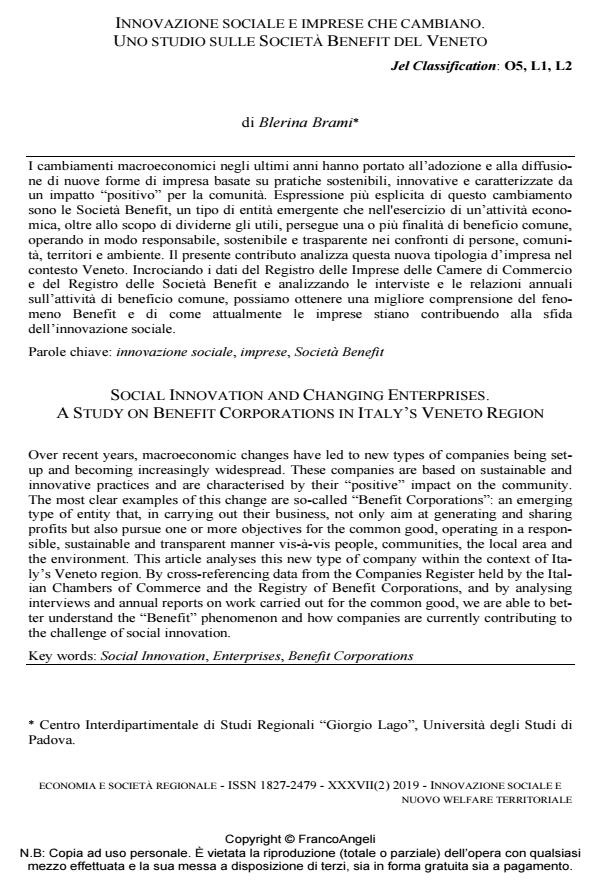Social innovation and changing enterprises. A study on benefit corporations in italy’s veneto region
Journal title ECONOMIA E SOCIETÀ REGIONALE
Author/s Blerina Brami
Publishing Year 2019 Issue 2019/2
Language Italian Pages 12 P. 96-107 File size 248 KB
DOI 10.3280/ES2019-002009
DOI is like a bar code for intellectual property: to have more infomation
click here
Below, you can see the article first page
If you want to buy this article in PDF format, you can do it, following the instructions to buy download credits

FrancoAngeli is member of Publishers International Linking Association, Inc (PILA), a not-for-profit association which run the CrossRef service enabling links to and from online scholarly content.
Over recent years, macroeconomic changes have led to new types of companies being setup and becoming increasingly widespread. These companies are based on sustainable and innovative practices and are characterised by their "positive" impact on the community. The most clear examples of this change are so-called "Benefit Corporations": an emerging type of entity that, in carrying out their business, not only aim at generating and sharing profits but also pursue one or more objectives for the common good, operating in a responsible, sustainable and transparent manner vis-à-vis people, communities, the local area and the environment. This article analyses this new type of company within the context of Italy’s Veneto region. By cross-referencing data from the Companies Register held by the Italian Chambers of Commerce and the Registry of Benefit Corporations, and by analysing interviews and annual reports on work carried out for the common good, we are able to better understand the "Benefit" phenomenon and how companies are currently contributing to the challenge of social innovation.
Keywords: Social Innovation, Enterprises, Benefit Corporations
Blerina Brami, Innovazione sociale e imprese che cambiano. Uno studio sulle società benefit del Veneto in "ECONOMIA E SOCIETÀ REGIONALE " 2/2019, pp 96-107, DOI: 10.3280/ES2019-002009